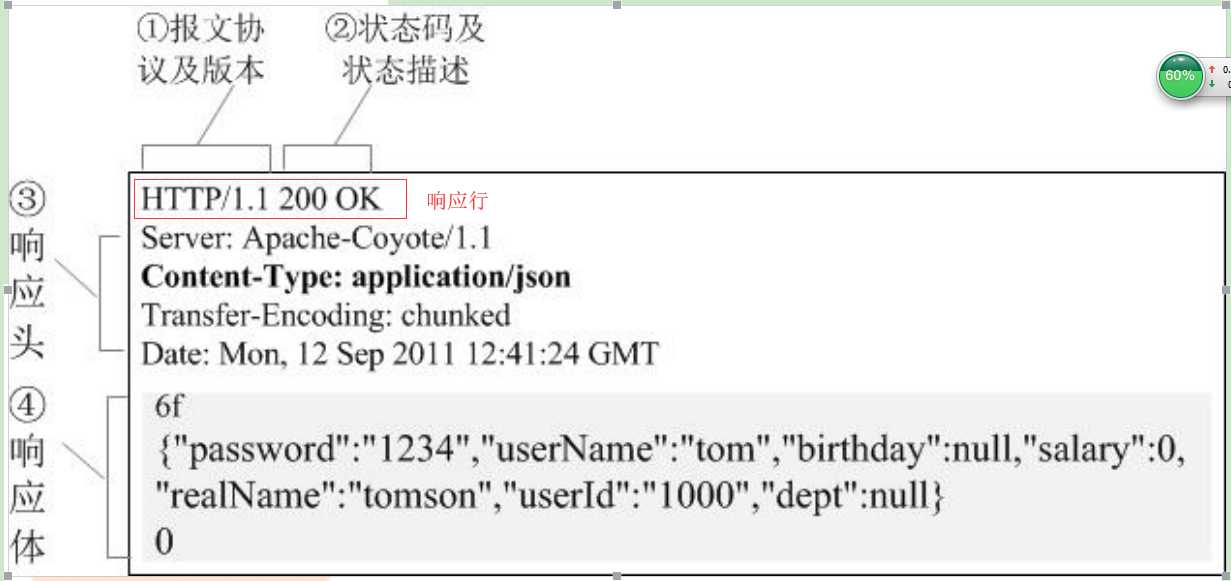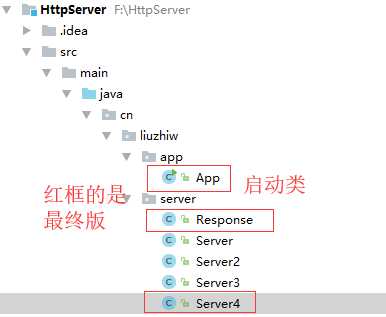标签:client 提交 协议 监听 x64 安全性 get 特点 max-age
什么是Http协议?
Http协议: 对浏览器客户端 和 服务器端 之间数据传输的格式规范
Http是一个属于应用层的面向对象的协议,由于其简捷、快速的方式,适用于分布式超媒体信息系统。它于1990年提出,经过几年的使用与发展,得到不断地完善和扩展。目前在WWW中使用的是HTTP/1.0的第六版,HTTP/1.1的规范化工作正在进行之中,而且HTTP-NG(Next Generation of HTTP)的建议已经提出。
HTTP协议的主要特点可概括如下:
1.支持客户/服务器模式。
2.简单快速:客户向服务器请求服务时,只需传送请求方法和路径。请求方法常用的有GET、HEAD、POST。每种方法规定了客户与服务器联系的类型不同。由于HTTP协议简单,使得HTTP服务器的程序规模小,因而通信速度很快。
3.灵活:HTTP允许传输任意类型的数据对象。正在传输的类型由Content-Type加以标记。
4.无连接:无连接的含义是限制每次连接只处理一个请求。服务器处理完客户的请求,并收到客户的应答后,即断开连接。采用这种方式可以节省传输时间。
5.无状态:HTTP协议是无状态协议。无状态是指协议对于事务处理没有记忆能力。缺少状态意味着如果后续处理需要前面的信息,则它必须重传,这样可能导致每次连接传送的数据量增大。另一方面,在服务器不需要先前信息时它的应答就较快。
Http是使用Socket中的TCP协议实现,基于请求(客户端)、响应(服务器端)
实例:http://127.0.0.1:8080/项目路径
Http协议分为请求报文和响应报文
请求模式 Get、Post、Delete…
默认Http请求参数(请求报文)
GET / HTTP/1.1
Host: 127.0.0.1:8080
Connection: keep-alive
Cache-Control: max-age=0
Upgrade-Insecure-Requests: 1
User-Agent: Mozilla/5.0 (Windows NT 6.1; Win64; x64) AppleWebKit/537.36 (KHTML, like Gecko) Chrome/53.0.2783.4 Safari/537.36
Accept: text/html,application/xhtml+xml,application/xml;q=0.9,image/webp,*/*;q=0.8
Accept-Encoding: gzip, deflate, sdch
Accept-Language: zh-CN,zh;q=0.8
Cookie: Hm_lvt_b43c1c82b09cda6b125e6981fbde442c=1487946887,1487950668,1488114252; CNZZDATA1259976290=1895288300-1478441025-%7C1488116464

Http响应报文
HTTP响应报文与HTTP请求报文是对应的,也是分为三个部分。
1、响应行
2、响应头
3、响应体

项目结构图:

上代码
封装响应的数据类
package cn.liuzhiw.server;
import java.io.BufferedWriter;
import java.io.IOException;
import java.io.OutputStream;
import java.io.OutputStreamWriter;
import java.util.Date;
/**
* 封装响应的数据类
* Created by 刘志威 on 2018/4/24.
*/
public class Response {
//空格
private final String BLANK=" ";
//换行
private final String BR="\r\n";
//显示Http响应头
private StringBuffer responseData;
//封装网页信息
private StringBuffer responseInfo;
//字符缓冲输出流
private BufferedWriter bufferedWriter;
//响应的长度
private long len;
//初始化配置
public Response(OutputStream outputStream){
responseData=new StringBuffer();
responseInfo=new StringBuffer();
bufferedWriter=new BufferedWriter(new OutputStreamWriter(outputStream));
}
//创建头部信息
private void createHeadInfo(int code){
responseData.append("HTTP/1.1");
responseData.append(BLANK);
responseData.append(code + "").append(BLANK);
switch (code){
case 200:
responseData.append("ok");
break;
case 404:
responseData.append("not found");
break;
case 500:
responseData.append("server error");
break;
default:
break;
}
responseData.append("Date:").append(new Date()).append(BR);
responseData.append("Content-Type: text/html;charset=UTF-8").append(BR);
responseData.append("Content-Length:").append(len).append(BR);
responseData.append(BR);
}
/**
* 填充页面类容
* @param str
* @return
*/
public Response print(String str) {
responseInfo.append(str);
len += str.getBytes().length;
return this;
}
/**
* 发送数据
* @throws IOException
*/
public void connect(int code) throws IOException {
createHeadInfo(code);
bufferedWriter.append(responseData.toString());
bufferedWriter.append(responseInfo.toString());
//刷新
bufferedWriter.flush();
//关闭
bufferedWriter.close();
}
}
服务器核心配置类
package cn.liuzhiw.server;
import java.io.*;
import java.net.ServerSocket;
import java.net.Socket;
import java.util.Date;
/**
* 服务器核心配置类
* Created by 刘志威 on 2018/4/24.
*/
public class Server4 {
//socket服务端
private ServerSocket serverSocket;
//端口号
private final int PORT=8080;
/**
* 启动服务器
*/
public void start() throws IOException {
System.out.println("服务器启动成功.........");
//监听服务器
serverSocket=new ServerSocket(PORT);
//接受客户端数据
acceptClient();
//关闭链接
closeServer();
}
/**
* 接受客户端数据
* @throws IOException
*/
public void acceptClient() throws IOException {
//拿到socket客户端对象
Socket accept = serverSocket.accept();
//拿到输入流
InputStream inputStream = accept.getInputStream();
byte []data=new byte[20480];
int read = inputStream.read(data);
String message = new String(data, 0, read);
System.out.println("客户端发送来的数据:"+message);
//响应回去数据
Response response=new Response(accept.getOutputStream());
response.print("<html><head><title>响应页面</title></head><body>响应页面成功</body></html>");
response.connect(200);
}
/**
* 关闭链接
* @throws IOException
*/
public void closeServer() throws IOException {
if (serverSocket!=null){
serverSocket.close();
}
}
}
服务器启动入口
package cn.liuzhiw.app;
import cn.liuzhiw.server.Server4;
import java.io.IOException;
/**
* 服务器启动入口
* Created by 刘志威 on 2018/4/24.
*/
public class App {
public static void main(String[] args) throws IOException {
Server4 server=new Server4();
server.start();
}
}
html请求的页面
<html> <head> <meta http-equiv="Content-Type" content="text/html; charset=UTF-8"> <title>Http服务器post方式提交参数</title> </head> <body> <pre> method:请求方式 get/post get:数据量小,安全性不高 默认方式 post:量大,安全性相对高 action:请求的服务器路径 id:编号:前端区分唯一,js使用 name:名称后端(服务器)区分唯一性,获取值 只要提交数据给后台,必须存在name; </pre> <form action="http://127.0.0.1:8080/index" method="post"> 用户名称:<input type="text" name="uname" id="uname"> 用户面:<input type="password" name="pwd" id="pwd"> <input type="submit"> </form> </body> </html>
页面效果和后台效果



标签:client 提交 协议 监听 x64 安全性 get 特点 max-age
原文地址:https://www.cnblogs.com/liuzhiw/p/8934430.html